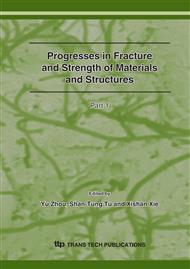p.1793
p.1798
p.1802
p.1806
p.1810
p.1814
p.1818
p.1822
p.1826
Mechanical Properties of 316L Stainless Steel with Nanostructure Surface Layer Induced by Surface Mechanical Attrition Treatment
Abstract:
The mechanical properties of the 316L stainless steel subjected to surface mechanical attrition treatment (SMAT) have been studied, these properties are hardness, tensile properties and wear resistance. The research shows that the thickness of the hardened layer increases with the increasing of the treating time. The refined microstructure in the treated layer led to increasing in hardness, strength, and wear resistance. It is obvious that the surface layer hardness and bulk yield strength are increasing when the SMAT time reaches 5 minutes. The increase of surface layer wear resistance is obvious when the SMAT time is 15 minutes. The SEM observation of the wear scars shows that the nanocrystalline layer might reduce the effect of adhesive wear of 316L stainless steel. Therefore, the wear mechanism changes from adhesive abrasion to grinding particle abrasion after SMAT.
Info:
Periodical:
Pages:
1810-1813
Citation:
Online since:
September 2007
Authors:
Keywords:
Price:
Сopyright:
© 2007 Trans Tech Publications Ltd. All Rights Reserved
Share:
Citation:


